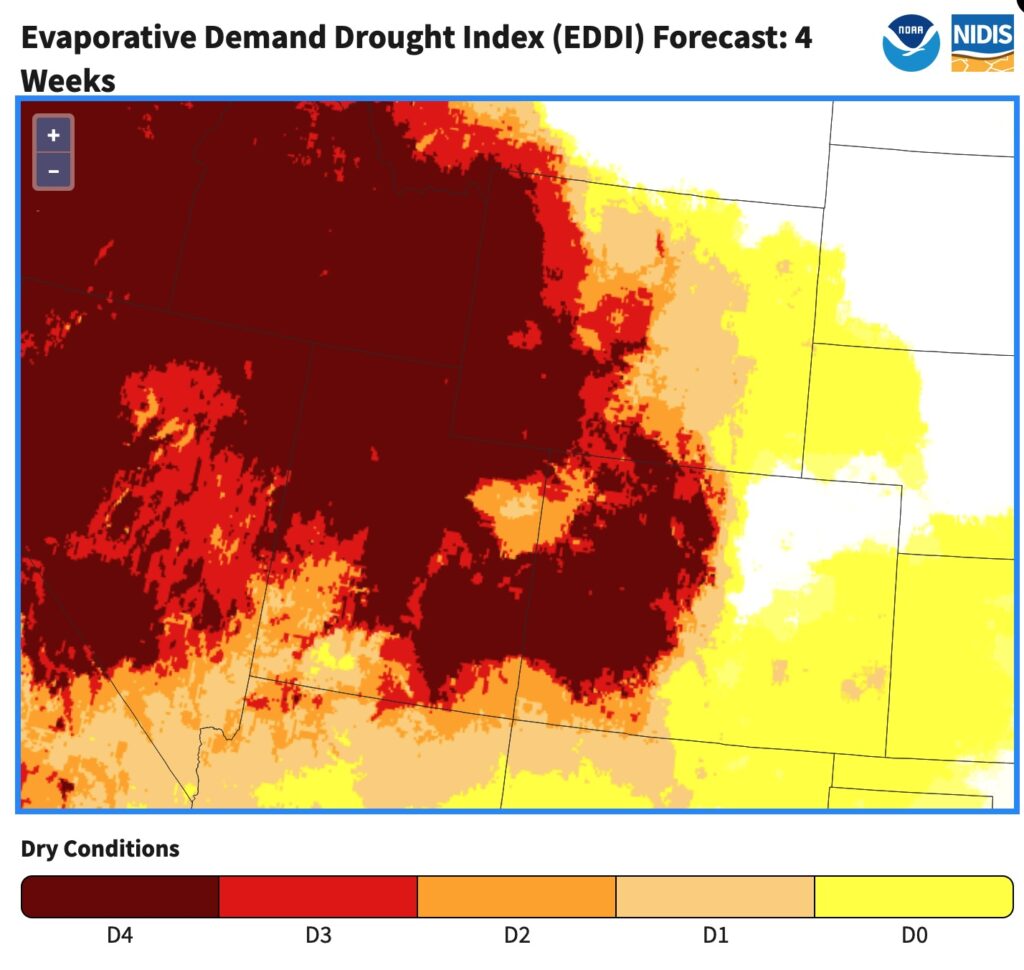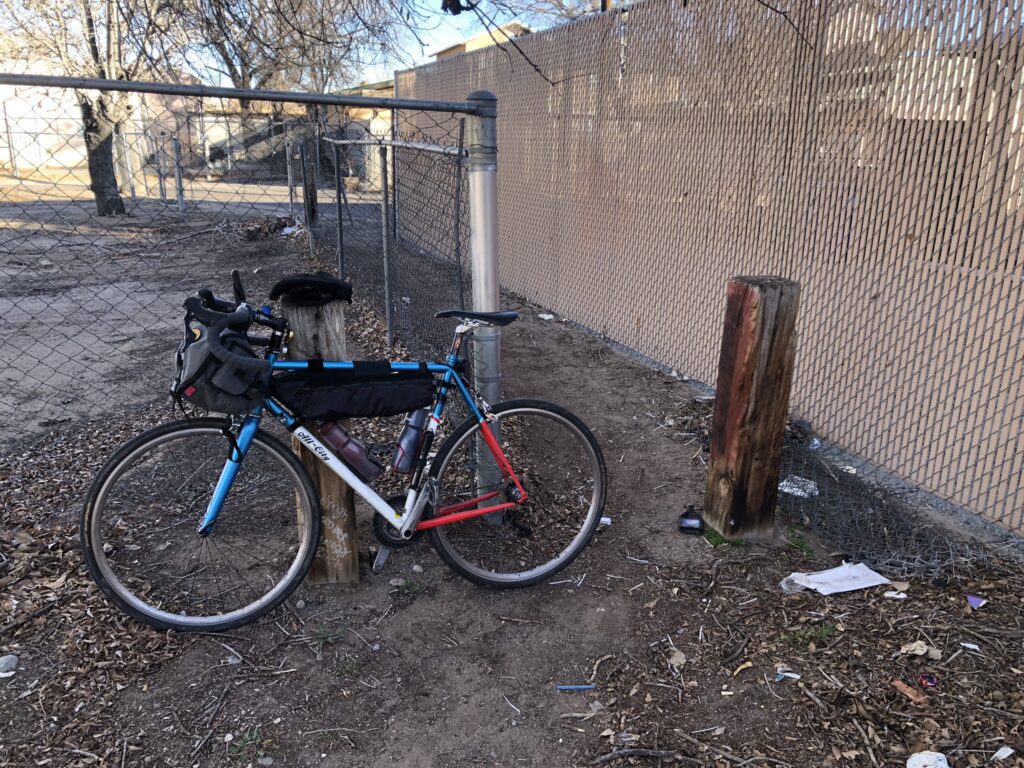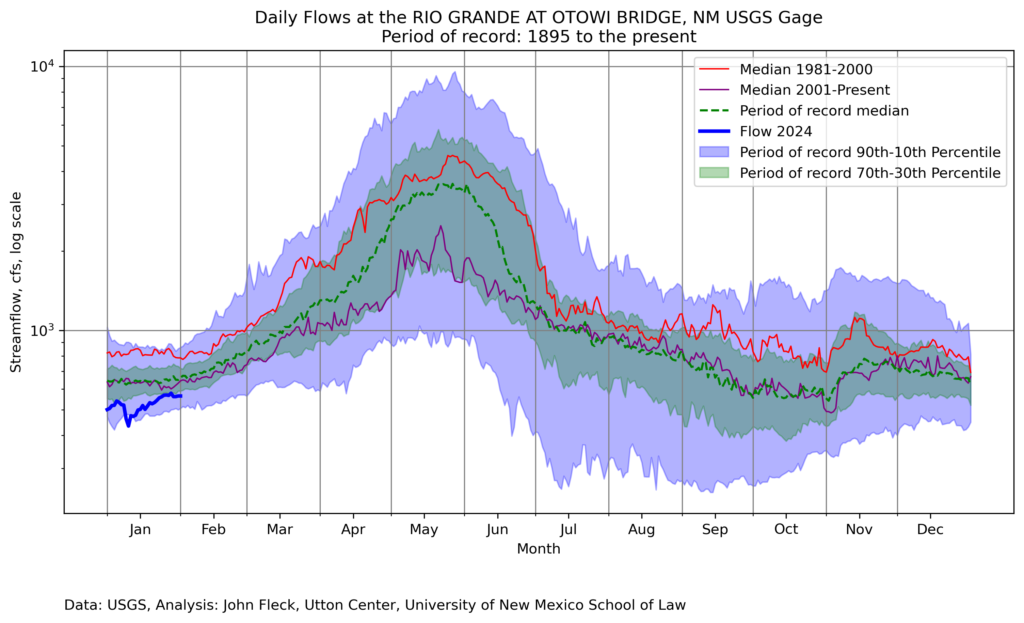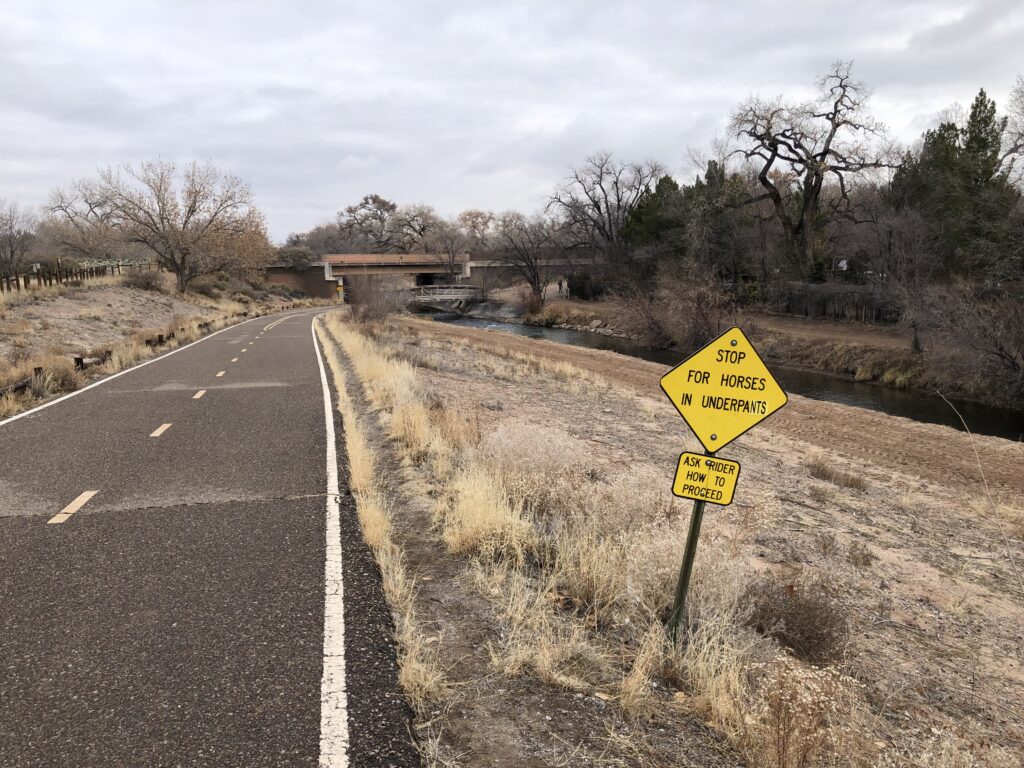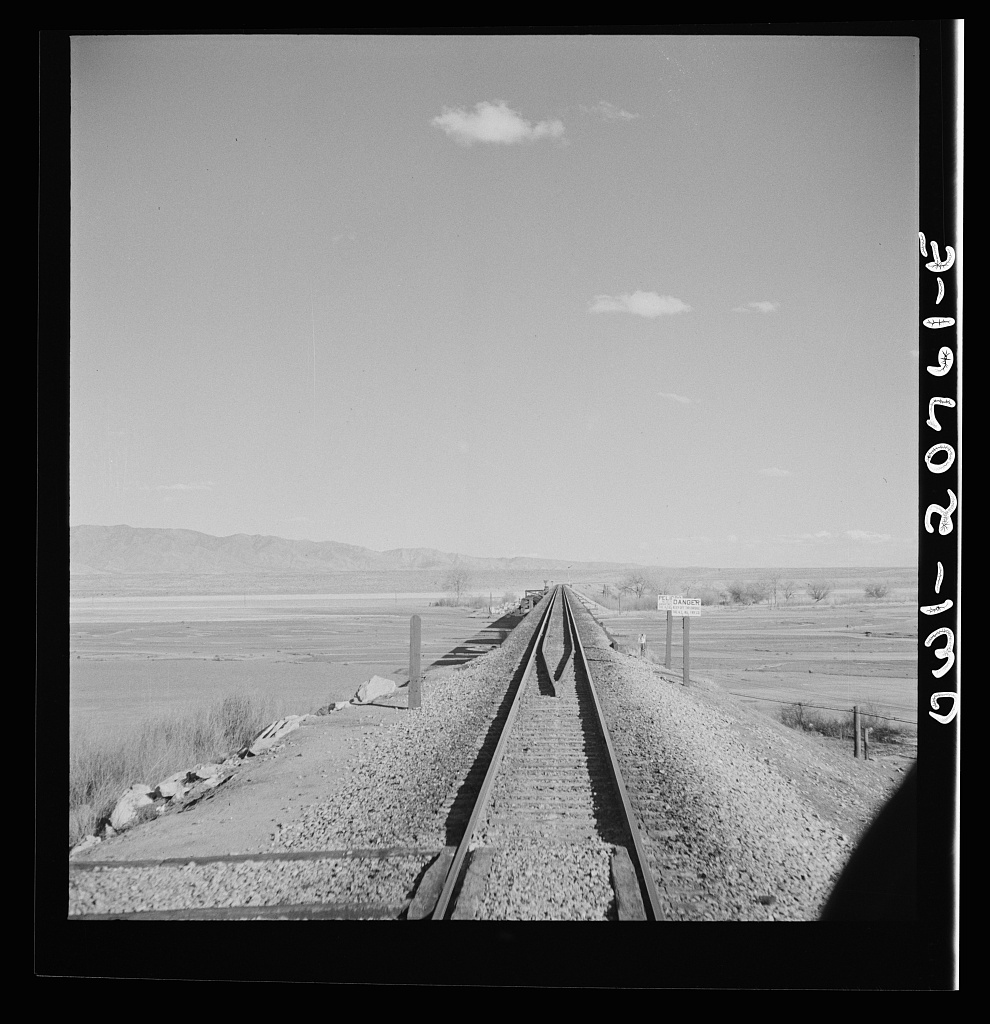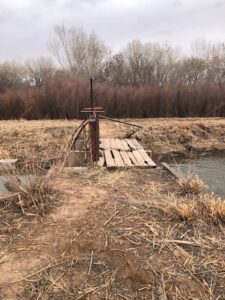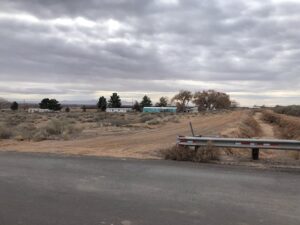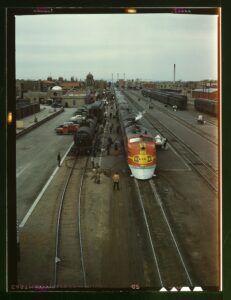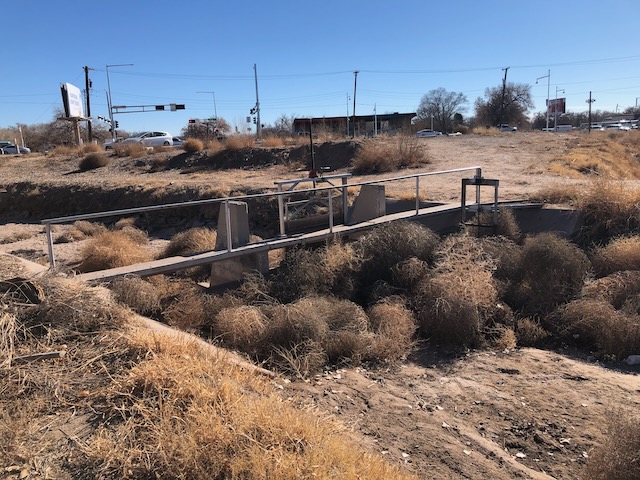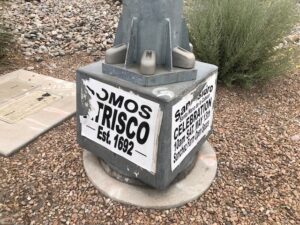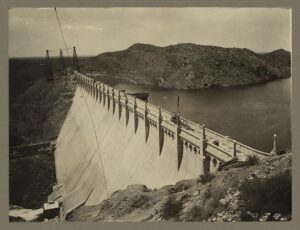By Eric Kuhn and John Fleck
The Bureau of Reclamation’s January 2024 “Most Probable” 24-month study forecasts that annual releases from Glen Canyon Dam for both Water Years 2025 and 2026 will be 7.48 million acre-feet per year (maf). If this happens, the ten-year total flow at Lee Ferry for the 2017-2026 period will drop to about 83.0 maf, only about 500,000 acre-feet above 82.5 million acre-feet, the first 1922 Compact hydrology “tripwire.”
That line – 82.5 maf feet of Lee Ferry deliveries over a ten year period – has become a dividing line between two contending interpretations of the most important unresolved question in the century-old Colorado River Compact: How much water must the Upper Basin deliver to the Lower Basin? What happens if it doesn’t?
The consequences of triggering the tripwire, which might happen in 2027, are significant. In the worst case scenario, it could plunge the basin into Supreme Court litigation over the interpretation of the 1922 Compact, which could result in a forced curtailment of post-compact water uses in the Upper Basin. Or, alternately, if the Basin States are willing to settle their long-term disputed issues or implement basic changes to the Law of the River via the renegotiations of the post-2026 operating rules, it could be a “non-event.” This is one of the fundamental issues facing the states as they meet to develop their basin-state alternative.
The 82.5 maf tripwire is based on the 1922 Compact’s two flow-related requirements at Lee Ferry; Article III(d) requires the four Upper Division States to not cause the progressive ten-year flow at Lee Ferry to be depleted below 75 maf. Additionally, Article III(c) provides that if there is not sufficient surplus water to meet the annual water delivery requirements of the 1944 Mexican Treaty, normally 1.5 maf, then each basin must provide half of the deficiency (the required annual delivery minus the available surplus). The Upper Division States must deliver their share of the deficiency at Lee Ferry in addition to their obligations under Article III(d).
The Upper Division and Lower Division States have never agreed on the meaning and interpretation of Article III(c). There have been numerous papers on the disputed issues by both compact scholars and practitioners and Article III(c) has never been interpreted by the U.S. Supreme Court. Suffice it to say that the Lower Division States believe that the Upper Division States must deliver at Lee Ferry a total of 82.5 maf every ten years (75 maf + 10 x 750,000), but the Upper Division States believe that they currently have no obligation to Mexico, so the number is at most 75 million. There are of course, nuances. The Lower Division States have suggested that the Upper Division States might also need to cover transit losses between Lee Ferry and Mexico and the Upper Division States have most recently suggested that if climate change, not Upper Basin depletions, is causing the ten-year flow to fall below 75 million, then their article III(d) non-depletion obligation must be appropriately adjusted. Further, if pursuant to either the extraordinary drought provision or a treaty minute, the required annual delivery to Mexico is less than 1.5 maf, then, even with no surplus, the Upper Division’s 50% share would be less than 750,000 acre-feet.
One should recognize that the annual releases from the Glen Canyon Dam and the annual flow at Lee Ferry (the compact point) are not the same. Between the dam and Lee Ferry, the river gains flow from groundwater accretions (in part due to leakage around the dam) and from the Paria River. These gains can vary from about 30,000 acre-feet to over 300,000 acre-feet annually. The ten-year Lee Ferry flow for 2014-2023 was approximately 86.1 maf.
That amount – 86.1 maf – might seem like a safe cushion. But because it is a ten-year moving total, we are about to drop out years with big releases (9 million acre feet) and replace them with years with just 7.48 maf. At the end of 2024, because both 2014 (the year that drops out) and 2024 (the year that is added in) are 7.48 maf years, the ten-year flow will stay about the same. The way the ten-year flow calculation works is next year, 2015 will drop out and 2025 will be added in, and so on, but here is the problem; From 2015 through 2019, the 2007 Interim Guidelines dictated an annual release of 9 maf per year. With accretions, flows at Lee Ferry averaged about 9.18 maf per year (source: UCRC 74th Annual Report). Thus, if 2025 and 2026 are 7.48 maf years, the ten-year flow will lose about 1.5 maf/year making the total about 83 maf for the 2017-2026 period. Because the 2007 Interim Guidelines expire, we don’t know what the annual release will be in 2027, but if it’s less than about 8.5 maf, because 2017 was a 9 maf year, the ten-year Lee Ferry flow could drop below the tripwire – 82.5 maf (with two more 9 maf years, 2018 and 2019, in the pipeline).
We recognize that the 24-month studies don’t predict the future. They are a planning and management tool. It’s plausible that by 2027, a series of wet years could result in a ten-year flow that is much higher than 82.5 maf, something that is, in our view, unlikely. But as we sit here in January 2024, the 24-month study is the only planning tool we’ve got. It would behoove us to pay attention to what it is telling us.
If a future 24-month study projects that ten-year flows will fall below 82.5 maf, it will be a big deal for the basin. What provision of the Law of the River will control annual releases from Glen Canyon Dam – the post-2026 Operating Guidelines, the Lower Division’s interpretation of the 1922 Compact (82.5 maf), or the Upper Division’s interpretation of the 1922 Compact (75 maf or less)? If the Lower Division States agree to a ten-year flow target of less than 82.5 maf, are they effectively surrendering to the Upper Division States? If the Upper Division States agree to a flow target of 82.5 maf, are they effectively surrendering to the Lower Division States? If the Upper Basin states agree to either 82.5 maf or some smaller compromise delivery target and the hydrology remains bad, how will Wyoming, Colorado, New Mexico, and Utah – our states – approach the required water use reductions? What if there is not enough water in storage in Lake Powell (and the other CRSP reservoirs) to release sufficient water to bring the ten-year flows to 82.5 maf? Will the Lower Division insist that that the UCRC implement a curtailment of post-compact uses in the Upper Basin. If the UCRC refuses to do so, will that plunge the Basin into litigation?
At the recent 2023 CRWUA meeting, representatives of the Lower Division States stepped up and made it clear they own the “structural deficit,” and the conference was buzzing with talk of the innovative system approach the Lower Division has put on the table. This is great news, but as Colorado’s Royce Tipton concluded sixty years ago, the “structural deficit” is not a single number. It’s a range that depends on the interpretation of the Lee Ferry obligations of the Upper Division States under the 1922 Compact. If the average annual flow requirement is 8.25 maf/year, (which Tipton referred to as “fictional”) he calculated the deficit to be about 1.2 maf/year. Today we believe it’s about 1.4 -1.5 maf/year (Tipton’s assumptions about system losses were probably too low and perhaps his Lee Ferry to Lake Mead inflow assumptions too high). If, however, the average annual flow requirement is 7.5 maf/year, he calculated the deficit to be about 2 maf/year, today maybe 2.2 maf/year. This difference is huge, especially for the Central Arizona Project, the junior user on the Lower basin mainstem.
In the past decades, water managers in the Colorado River Basin have made accomplishments that even two decades ago were considered out of reach: The 2019 Drought Contingency Plans, the shortage sharing agreements with Mexico, the increased recognition of the rights of the Basin’s Native American communities are just a few. The Lower Division’s recent pronouncement that they own the structural deficit is another major step forward, but it has a fundamental flaw. Representatives of all seven Basin states continue to stubbornly insist that the Law of the River, and specifically, the 1922 Colorado River Compact, will serve as the “foundation” of the post-2026 operating guidelines. The flaw is that is that we don’t know if this foundation is based on a ten-year Lee Ferry flow of 82.5 maf, or 75 maf, or something different.
Put simply, the states agree that the Law of the River has to be the basis of what we do, but don’t agree on what the Law of the River actually says. Without an agreement on this fundamental issue, calling the 1922 Compact a foundation is nothing more than self-delusional wishful thinking. Now that the Lower Division States have agreed to own the structural deficit, is the next step for all seven states and the federal government to openly acknowledge that given the impacts of climate change on the river, the 1922 Compact’s overallocation of water and its disputed Lee Ferry flow provisions are core problems for the basin, not the foundation? Finding a sustainable future, without litigation, will require accepting and acknowledging the basic problems we face, not avoiding them.
